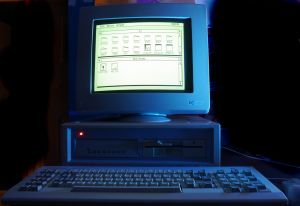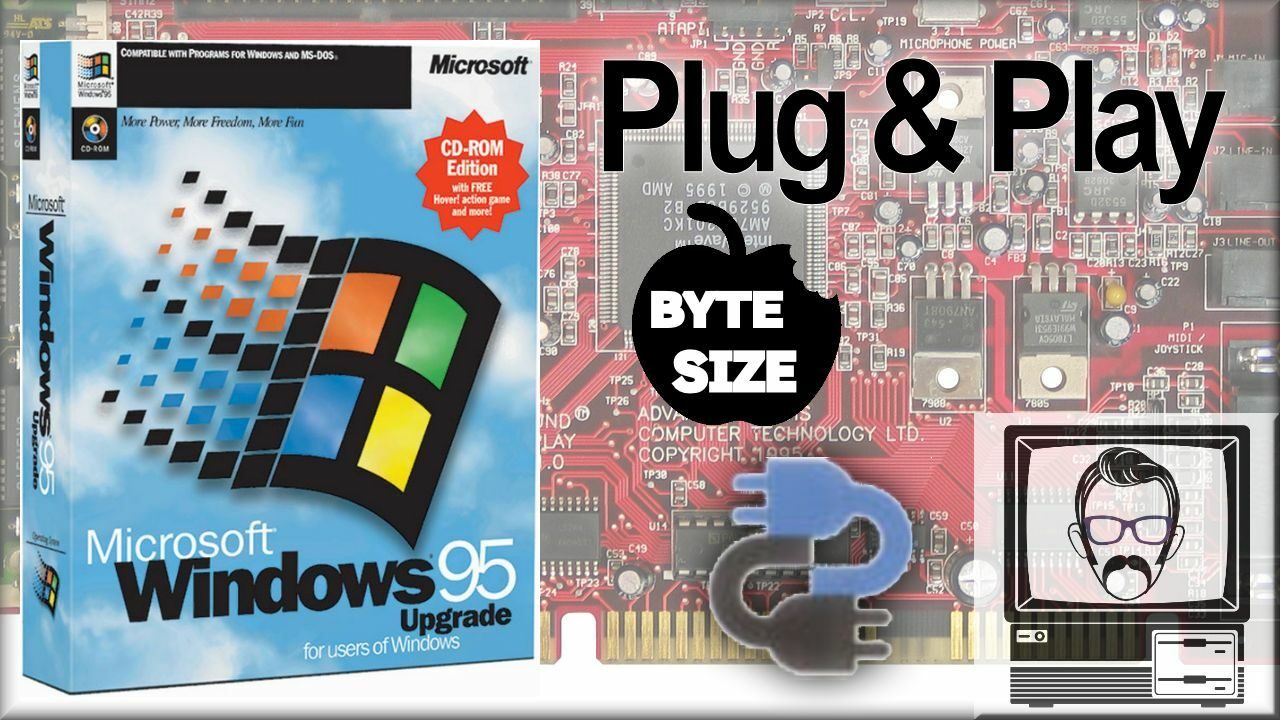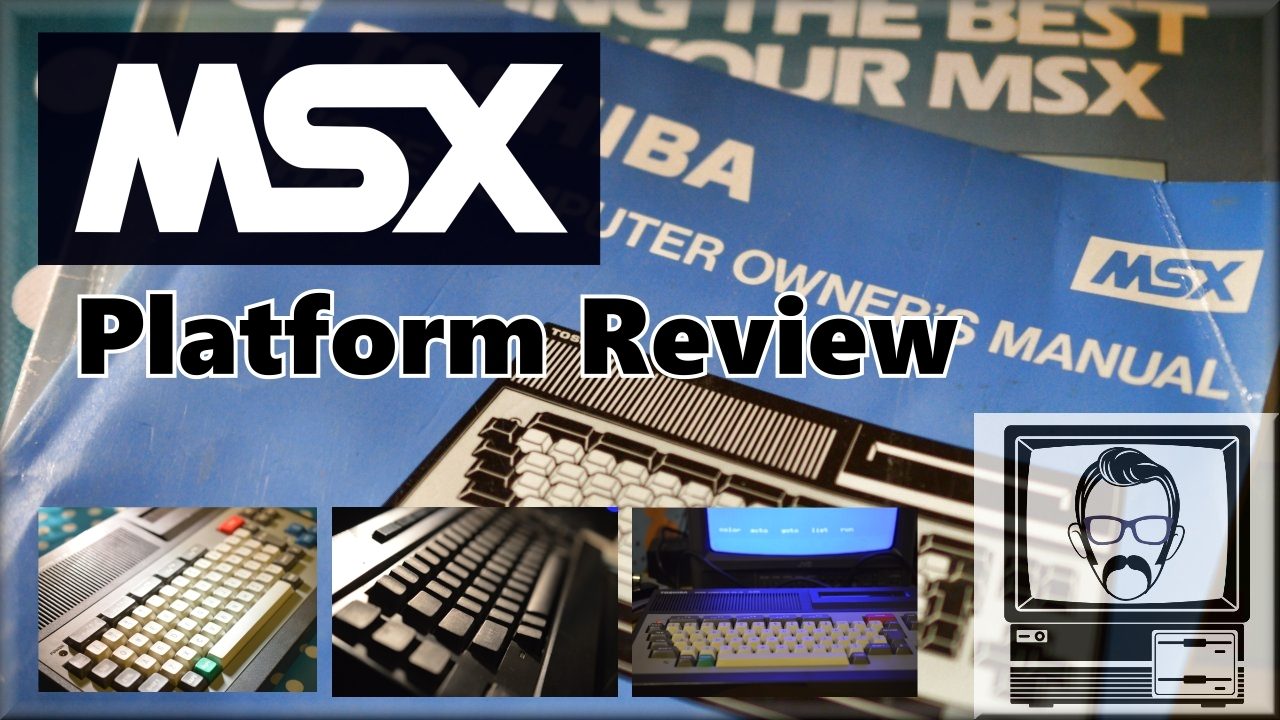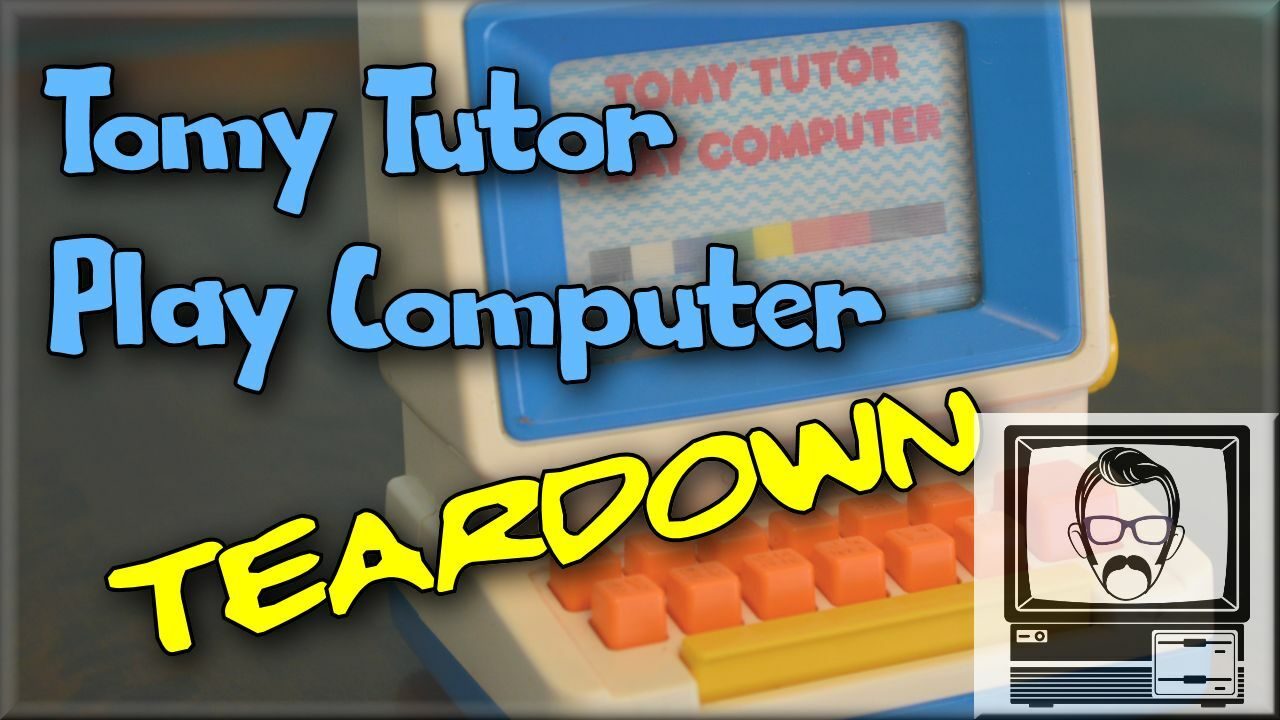Watch the Video
Today I’m looking at my Amstrad PC1512, whilst also providing a bit of back story to the iconic machine.
Name Derived from: PC (Personal Computer) 1 (1st in Amstrad’s IBM compatible line) 512 (512kb of memory)
The original internal code name within Amstrad for the 1512 was “Airo” reputedly standing for “Amstrad’s IBM Rip Off”. This was intended as a joke, as it was a serious worry for Amstrad to actually not be perceived as an IBM rip off, at the time.
Cloning the IBM PC
The design of the IBM PC was an open one – meaning it could be built from “off the shelf” parts. Mainly due to the speed IBM wanted their original machine manufactured & shipped, all of the components were available to buy as standard – i.e. no custom components. All that is, except for the machine’s BIOS. IBM retained the intellectual property for the BIOS, and therefore it was not possible just to rip the chip out and use it in a rival machine. It wasn’t even possible to look at the IBM BIOS and copy it, unless you wanted a hefty lawsuit on your hands. The only way to get around this was to give a specialist development team the specification of exactly what the IBM BIOS did and then work out a way of duplicating it, using their own methods. This didn’t always result in 100% compatibility, but it was usually pretty darn close, especially given the complexity of the method!
Amstrad employed MEJ Electronics to re-create the IBM BIOS, who had previously put together the hardware for Amstrad’s CPC and PCW machines. Amstrad had initially approached Locomotive software to take up the task (responsible for writing the BASIC on CPC models), however, they declined due to the fear that IBM might pull a lawsuit against them regardless.
Upon opening the IBM machine, MEJ discovered that most of the system architecture was made up of small discreet components on a hefty motherboard – typically an expensive way of doing things as opposed to creating custom chips, that could take up the task of many of the smaller chips. This confirmed to Amstrad that the machine could be produced much cheaper, and therefore become a player in the home and small business markets.
Entering The Market
First manufactured in 1986, the PC1512 was released after Amstrad had purchased the Sinclair name, along with it’s line of home computers. It also came before Amstrad’s home line; The Amstrad CPC 464, the CPC 664 and the CPC 6128 (early home computers based on the Z80 processor). Amstrad had launched a couple of business type machines, namely the PCW 8256 and the PCW 9512, a year earlier in 1985 – these were dedicated to word processing use, but were affordable and filled a market gap (i.e. replacing type writers).
Alan Sugar wasn’t ever a traditional “boffin” who got into the computing industry through passion. Instead, he was all business (as quoted in an interview “We are business men, we’re not made up by a team of ex-graduates who have thrown a few electronic components in a plastic box”… Sugar’s typical arrogant, non-shit giving, slightly ignorant and simplifying style), and got into the computing market as it looked lucrative. His tactic was to spot holes and try to improve on what already existed. Building on this, the 1512 was Sugar’s attempt to create a ‘serious computer’ and break into the IBM Compatible PC market. The home market was no where near as strong in the UK as it was at the time in the US and Sugar saw an opportunity to change this.
As with all Amstrads before it, there was some quirkiness with the machine. It also stuck to his tried and tested approach of creating something affordable, simple (i.e. complete and easy to setup) and reasonably spec’d. This multiple box ticking approach worked well in the UK and Europe, and as intended, it was one of the first cheap PCs to land in this area. The UK PC magazine PC Plus, even sold itself as for “Amstrad PC 1512 and compatibles”. However, even though the advertising for the “Strad” was aimed at home use, it also faired well in the office & business sectors.
| Here’s one of the commercials for the 1512 (albeit, a French one), to give you an idea of Amstrad’s marketing tactics at launch (although this French advert looks a bit business orientated :-/). Translated using YouTube captions, we arrive at the following dubious result;
If you just buy any co-ordinators, you may find yourself all came (errrr?). With a strap effect December 15 compatible with who you know, everything is included I screen! I CPU is 512KB of memory. Keyboard and mouse. Up December 31 Hamstra (Assuming Amstrad) offers for the same price treatment, text. A relational database and the graphics charts Hamstra PC. Professional computer that Hamstra you need PC from 5927 francs. So there you have it. Crystal clear. You certainly wouldn’t want to buy a co-ordinator and find yourself all came, now would you? |
Hardware
The standard machine shipped with up to two 5 1/4″ drives or an optional hard drive alongside a 5 1/4″. For video output, it featured an “enhanced” CGA graphic mode, which could display 640×200 pixels with 16 colors (or grey scale depending on the monitor). The PC also shipped with 512kb of RAM (it’s in the name!) and was followed up with the PC1640 (you can guess how much RAM was involved here) which also featured EGA compatible graphics. Rather uniquely, the power supply for the machine was built into the monitor, falling in line with Amstrad’s earlier CPC range. This also meant that the cable between base unit and display was a unique, round affair with 9 pins (with an additional 14 pin plug providing power from the monitor to the base unit) and a different video signal type (analogue with composite sync).
Software
 Microsoft had recently overtaken Digital Research as the largest operating system supplier, and MS-DOS was pretty standard on IBM Compatible PCs. MS-DOS was in fact heavily based on Digital Research’s CP/M Operating System.
Microsoft had recently overtaken Digital Research as the largest operating system supplier, and MS-DOS was pretty standard on IBM Compatible PCs. MS-DOS was in fact heavily based on Digital Research’s CP/M Operating System.
Sugar approached Microsoft to licence their software, but wasn’t happy with the price offered. This came to the attention of Digital Research, who wanted to regain ground, and they swiftly brought all their support to the Amstrad PC with DOS-Plus. They expected it to show the same success as the CPC and PCW series. However, near launch, Microsoft realised how big the 1512 could be in the European markets and revised it’s offer. Sugar (astutely?) decided to then also include MS-DOS on floppy (as a dual boot setup on HDD versions). This, unfortunately, destroyed Digital Researches hopes of getting one up on Microsoft and massively limited their progress into the markets.
Digital Research’s DOS Plus was largely compatible with MS-DOS (although in my tests, slower), and also incorporated some features from CP/M with the additional ability to read CP/M discs.
As well as the HDD versions having a dual boot of MS-DOS 3.2 and DOS Plus (separate floppies on standard machines). Amstrad shipped the machines with the Digital Research’s GEM (Graphic Environment Manager) Window system, which was heavily based on the Apple MAC OS. This is the same desktop that shipped with Atari ST models and had a reasonable feature set, but never really gained traction in the market.
Accessories
Accessory wise, the machine shipped with a bespoke Amstrad mouse, which was incompatible with most software designed for the standard serial mouse. Rather uniquely (and impressively), the keyboard had a port for an Atari (9 pin) compatible joystick. The movements of the joystick could be mapped to keyboard codes which allowed users to take advantage of this control method even in games that weren’t designed to use anything other than keyboard controls.
Nasty Rumours
The monitor based power supply meant that it was difficult to expand the machine, but also that the machine was much quieter than a typical PC of the time; the monitor allowed for more vents and cooling, therefore a noisy fan (which they were at the time) was unnecessary. Typically a minority of users were upset about this and complained of overheating issues – although these were unsubstantiated, it was enough to disrupt the market share of the machine, which had done well in home markets up until this point.
 Many ignorant people had assumed that Amstrad had left out a fan to cut costs. Alan Sugar repeatedly expressed to the press and media that it was unnecessary due to the increased convection cooling from the monitor case and was quoted as saying;
Many ignorant people had assumed that Amstrad had left out a fan to cut costs. Alan Sugar repeatedly expressed to the press and media that it was unnecessary due to the increased convection cooling from the monitor case and was quoted as saying;
“I’m a realistic person and we are a marketing organisation, so if it’s the difference between people buying the machine or not, I’ll stick a bloody fan in it. And if they want bright pink spots on it I’ll do that too. What is the use of me banging my head against a brick wall and saying ‘You don’t need the damn fan, sunshine?'”
I, for one, can feel his pain here! The result of this, was that Amstrad started putting fans into HDD models shortly after, which although ridiculous, was necessary to help stop the rumours! It is quite likely that the rumours of unreliability were started by the IBM sales team. A dirty tactic that IBM were already known for at the time.
Pricing
As well as having a unique design, the pricing of the 1512 was substantially cheaper than IBM machines. The cheapest model, with a single floppy drive and monochrome display was just £399, with the most expensive 20MB HDD model tipping the scales at £949. In comparison, the cheapest IBM machine at the time was almost £1500, with an inferior spec. to even the cheapest 1512.
The problem encountered by Amstrad, was that people were happy to pay for the HDD model over the cheap version, but not enough were produced. Combined with rumours of overheating, this lead to the 1512 not performing as well as it should or could have.
Specification Overview
| OS | MS-DOS 3.2 Alongside Digital Research DOS Plus. Also shipped with GEM Desktop (Window environment, as included with Atari ST models). |
| CPU | Intel 8086 clocked at 8MHz |
| Storage | 1 or 2 360KB 5/14″ Floppy. Optional 20MB HDD |
| RAM | 512KB Expandable to 640KB |
| Video | CGA Compatible |
| Display | Monochrome (Greyscale CGA) or Colour |
| Sound | PC Speaker |
| Ports | Atari Joystick port on keyboard, RS232c Serial, Parallel, Mouse, Keyboard, Monitor/Power Combined, 3 Full length expansion slots accessible via. top back panel |
| Other | Volume Control for PC Speaker!! |
My PC1512
I picked up my boxed, PC1512 up from eBay for the reasonable price of £49.95 (with £16 shipping charges). All in all, not a bad price (for eBay!). The machine came in it’s original packaging (including poly inserts), with original software discs, manual, keyboard and mouse.
In addition my model has been expanded to 640kb with a 30MB HDD installed – Now we’re talking!
It’s featured in this video, along with a little bit of background about the machine and the 1980s….
Gallery
[SlideDeck2 id=356]
Opinion
The PC1512 is a great little machine, especially for it’s time, in 1986. It was well equipped, cheap and had a fast 8MHz processor. The visual abilities were good, offering CGA graphics, which surpassed more expensive IBM PC models. Quirks like the addition of the PC speaker volume and joystick port are also fantastic additions.
It’s a shame that the machine suffered from the rumours and stock problems it did, otherwise it’s success could have been phenomenal. As it stood, it still faired very well in the European markets and was a success to all intents and purposes.
Should You Buy One?
The custom video cables and limited expandability options limit the machine somewhat. You’re forced to use an old style Amstrad display (which is noticeably flickery). However, if you want to own a piece of UK history, that helped kick off the home IBM PC market, then this is the machine to get.
Most ship with a HDD, which is pretty essential, especially given the unreliability with old 5 1/4″ disks. So if you find one for less than £50, and you’ve got the room to store it, pick one up and feel the Nostalgia, like a nerd.
If you want a more adaptable machine to play old DOS games and run archaic software, then you might be better sticking to a standard IBM PC compatible. You can get one cheaper, probably, and the scope to modify and expand on it, is much larger.

Nostalgia Nerd is also known by the name Peter Leigh. They routinely make YouTube videos and then publish the scripts to those videos here. You can follow Nostalgia Nerd using the social links below.





2 Comments
Add Yours →Amstrad P1512.
Good morning.
I am doing a little research for a writing project. Could this machine have been used in the early nineties as something for writing long documents such as diaries and could they have been printed out? I’m looking for a machine around 1990 in the UK that could have been used as a way for writing a diary and printing off the entries on a weekly basis.
Thank you for your help and have a wonderful day.
Ciaran.
Well, 4 years later my answer to your comment 😉 I wrote my thesis on this Amstrad computer with MS Word 3 for DOS. 160 pages with several printouts. So this is a clear YES to your question. The thesis may not have been the best, but I found work as a MS Word teacher and started also work for an US-company as sales rep and later product manager for word processing: Lotus Ami the product was called, the first graphical word processor (WYSIWYG), running reasonably on an 80286 PC. Thanks Amstrad, and thanks to my dad who bought the computer!